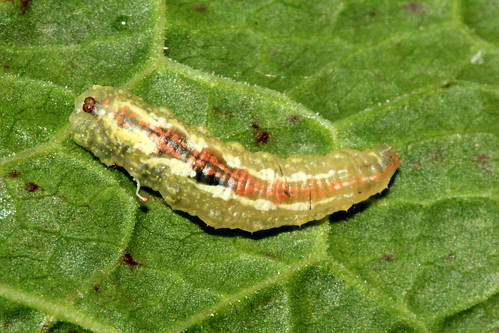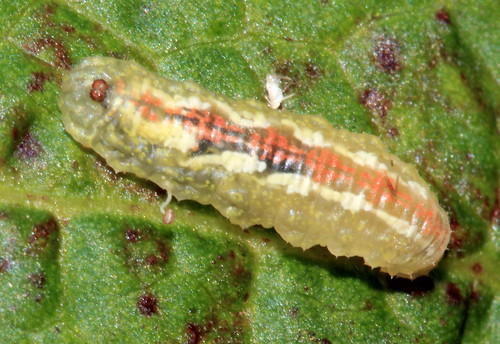Hoverfly Larvae
A truly diverse range of adaptions to meet all occasion
This is the Larvae of a Syrphid Hoverfly Syrphus sp probably Syrphus ribessi Hoverfly larvae undergo 3 moults with the final moult , the first two usually occurring in days and the last many moths or even years depending on conditions . These Syrphids are gardeners friends feeding on Aphids

The Transformation ........these Adults will now feed on Pollen giving them there common name of Flower flies

The Eristalis aere very relevant to TAG Loop and some of the ground water in the Willow carrs Larvae of the Drone Fly are very remarkable. They live in stale and very polluted water with almost no oxygen. As a solution to this problem they developed a very long tube on the backside of the body. This tube sticks out of the water and are some times referred to as Rat tailed larvae
They are many Saphrophagous larvae living in the waters of Tag Cut and Carrs and fiilterring Micrio-organisms form the water , in distinct micro habitats such as
Sap Runs
Rotten Wood
Rot Holes
Under Bark
Rotting Vegetation and Other Wetland Situations
Saprolyxic- Wood feeding Beetle larvae also use the vegetation
Some larvae of Cheilosa sp live on the roots of Buttercups and other like Some Cheilosa larvae ( C. longula and C. scutellata. )live on the caps of large Boletus
They are many Saphrophagous larvae living in the waters of Tag Cut and Carrs and fiilterring Micrio-organisms form the water , in distinct micro habitats such as
Sap Runs
Rotten Wood
Rot Holes
Under Bark
Rotting Vegetation and Other Wetland Situations
Saprolyxic- Wood feeding Beetle larvae also use the vegetation
Some larvae of Cheilosa sp live on the roots of Buttercups and other like Some Cheilosa larvae ( C. longula and C. scutellata. )live on the caps of large Boletus
By looking at the group combinations of Hoverflies ( H1 , H2 H3 ) and they are 300 British Species it i possible to make accurarte assumptions about habitat they are therefore very good indicator species - An indicator species is any species that defines a trait or characteristic of the environment.
Eg
Ref :Hoverflies as primary woodland indicators with reference to Wharncliffe Wood Stubbs, A.E., 1982. Sorby Record, Sheffield, No. 20: 62-67.
There are many relationships with that Hover fly Larave have there are relationships with Bees & Wasps,
Volucella sp of Hoverfly can live in the nests of Social Bees and Wasps living on material from, the nest floor and with With Ants Microdon living on eggs
Our FEET mapmate records have Currently 30 - 40 identified species of Hoverfly on the reserve and we are currently other Indicator Groups to enhance records and determine the overall picture on the reserve
Ref :Colour Guide to Hoverfly Larvae (Diptera, Syrphidae) in Britain and Europe, Graham Rotheray, 1993. Dipterists Digest, No. 9, 156 pages. ISSN 0853 7260.
Want To know more about Hoverflies ?
All About Hoverflies



No comments :
Post a Comment